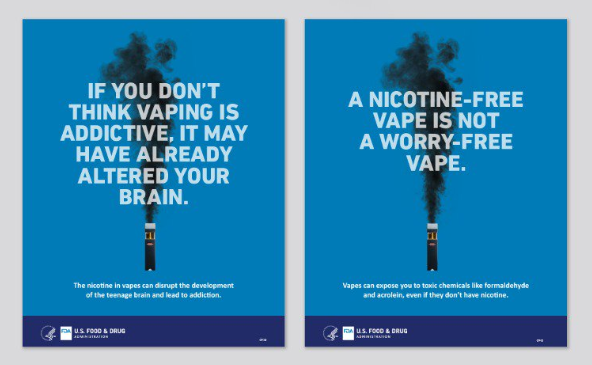We’re all aware of the issue of vaping among teens. Schools have anti-vaping signs, presentations, counseling, and an extensive list of resources trying to reduce the number of teens who use e-cigarettes. Well it looks like all of our collective efforts are definitely starting to make a difference. In a recent survey, more than half (53.4%) of adolescents in the U.S. who reported current e-cigarette use said they intended to quit, and two-thirds recounted past-year attempts to quit. That is the highest number we have seen yet of teens at least attempting to quit.
Using data from the 2020 National Youth Tobacco Survey (NYTS) — which produced 1,660 respondents ages 11 to 18 in the study’s final analytical sample — researchers found that intention to quit was lower among girls versus boys, in users of modifiable vapes versus disposable e-cigarettes, and in those who used other tobacco products in tandem with their e-cigarettes versus sole e-cigarette users.
However, E-cigarette harm perception was positively associated with both intention to quit and past-year attempts to quit.
The reason why teens started vaping in the first place also had an interesting correlation with their attempts to quit. Teens who started using e-cigarettes out of curiosity had higher odds of a past-year attempt to quit. On the other hand, those who used e-cigarettes to disguise their pre-existing use were less likely to report both intention to quit and past-year quit attempts.
On average, the number of past-year quitting attempts was 5.3; this number was lower for girls and young women, users of a refillable device such as JUUL, and those who reported experiencing nicotine cravings.
The number of adolescents in the U.S. who reported intention or past-year attempts to quit vaping in this study was significantly higher than a previous assessment, which used 2017 Population Assessment on Tobacco and Health (PATH) data and found that 44.5% of middle and high school students were seriously considering quitting and 24.9% made past-year quit attempts.
Hongying Dai, PhD, of the University of Nebraska Medical Center in Omaha, the conducter of the survey, noted that this difference may be due in part to the location of the surveys — NYTS is school-based, while PATH is home-based — and variations in question phrasing, she also pointed out that the constantly changing e-cigarette market likely played its own role. For example, she wrote, the widespread media coverage on vaping risks in 2019 following reports of lung injuries may have had an impact on adolescents’ attitudes towards e-cigarettes.

Posters, like this one from the FDA, and campaigns like the ones put on by TheTruth.com are helping to bring the dangers of vaping to the forefront of youth’s knowledge.
Additionally, since 2017, there has been a growing body of research detailing the adverse health effects of adolescent e-cigarette use disseminated through social media and news outlets. New legislation — such as Tobacco 21, which has made it harder for those under 21 to buy tobacco and nicotine products — has also likely contributed to cessation behaviors.
“The findings from this study may inform the development of future evidence-based vaping cessation interventions,” Dai wrote. “Perceived harm of e-cigarette use is strongly associated with both intention to quit vaping and past-year quit attempts. As shown in the previous qualitative studies, health effect is one of the top reasons for adolescents to quit vaping.”
Along these lines, this study found that students who had heard of the FDA’s anti-vaping campaign, “The Real Cost,” had a higher prevalence of intention to quit vaping.
Still, Dai said, the high percentage (44.5%) of current e-cigarette users that don’t understand the full impact that vaping can have on health outcomes is cause for alarm. She pointed out the possible link between refillable vapes being exempt from the flavor ban in 2020 and the fact that those who used such modifiable systems had a lower prevalence of intention to quit.

The ability to modify and custom design your own vape also leads to a sense of personality expression, which can be dangerous because a young person’s personality can get tied in with vaping.
“Vaping products with a modifiable system allow users to customize voltage, temperature, and electronic liquids, tending to deliver nicotine to the lungs more efficiently,” she noted. “These features may increase the appeal and nicotine uptake from vaping.”
Dai acknowledged that the study’s self-report design does pose a significant limitation to her findings, as the self-reporting of intention to quit and past-year attempts may be subject to recall and social desirability biases. In addition, the definition of past-year quit attempts — requiring at least 1 day of attempting to quit — may inflate the number of true quit attempts, since those who only dabble in e-cigarette use may go days without vaping.
The best thing we can do is just keep putting information out there and having conversations with the young people we are close to. If you want to bring us out to speak at a school or youth center near you, whether in person or virtually, contact Admin@Raylozano.com, and ask about grant money in your area for a potentially free-to-you presentation.


